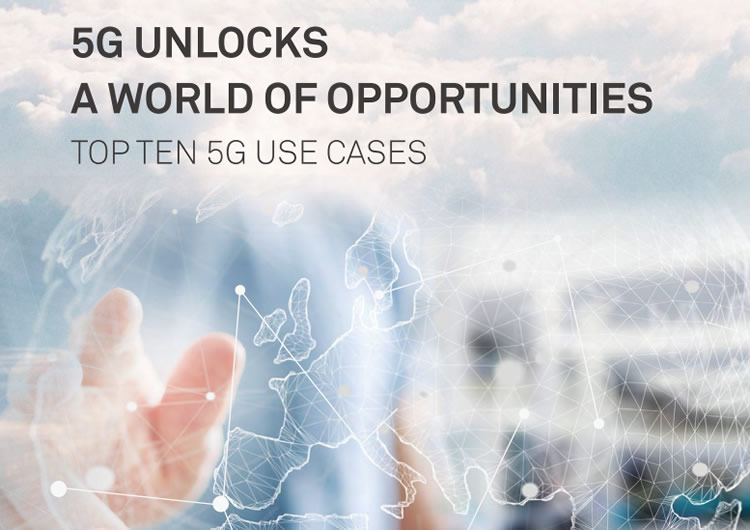Practical examples of how 5G will transform the world

5G has been a largely abstract concept for most people up to now. We know that the next generation of mobile network is going to be faster, broader, and more reliable than before, but to what end?
One of the most immediate applications of 5G that we’ve drawn attention to in the past is 5G fixed wireless broadband. This will see 5G essentially replacing fixed broadband solutions over the ‘final mile’ of fibre cabling to the customer’s premises, making it quicker, easier, and cheaper to get connected to high speed internet at home.
Another practical way in which we’ve talked about 5G having an impact is 5G TV. We already know that the next generation of mobile network will be able to support the streaming of ultra high-definition (UHD) video content to mobile devices, but its formidable bandwidth and greater reliability could enable it to replace traditional satellite and cable TV services too.
Of course, both of these examples are near-term, and are essentially replicating and replacing consumer technology that we already have. What about the truly transformative big picture stuff?
Chinese telecommunications giant Huawei recently published a white paper outlining a number of potential 5G use cases across ten key industries.
Here are just a handful of practical examples highlighted by Huawei:
- Cloud Virtual & Augmented Reality: 5G’s greatly expanded bandwidth and low latency will enable virtual reality live broadcast platforms.
- Connected Automotive: 5G-connected trucks will be able to ‘platoon’ together to form automated land trains.
- Smart Manufacturing: Robots will be able to collaborate and synchronise remotely using 5G’s lower latency and greater security.
- Connected Energy: Intelligent distributed feeder systems, will seamlessly integrate renewable energy generation into the grid.
- Wireless eHealth: With rapidly ageing populations in the West and in Asia, there’ll be a big push towards remote audio and video diagnosis.
- Wireless Home Entertainment: Cloud gaming will finally be able to take off, meaning 4K gaming at 90 fps without the need for expensive games consoles or PCs.
- Connected Drones: Companies will be able to conduct safer remote visual inspections using LiDAR-equipped fleets of drones, capitalising on 5G’s bandwidth and low latency.
- Social Networks: Expect Facebook (or whatever comes after) to switch to immersive UHD 360-degree live-streamed video broadcasting.
- Personal AI Assistant: With a ubiquitous high-bandwidth network like 5G, smaller wearable devices will be able to utilise cloud-based AI assistants to help run our lives.
- Smart City: Cities will be able to move to a cloud-based ‘Video Surveillance as a Service’ approach that requires much less investment in storage and management.
Read white paper here
50% off Lyca Mobile’s Pay As You Go plans
Lyca Mobile’s cheap Pay As You Go deals include roaming and international minutes.











